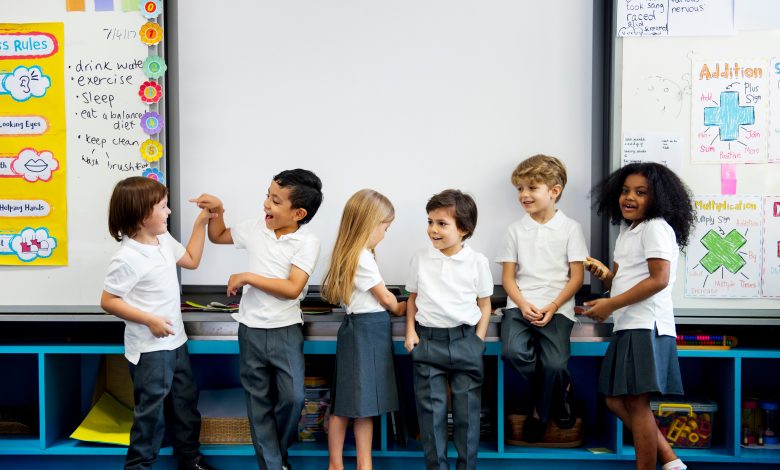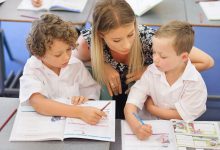
Schools play a vital role in educating young people about sexual health and wellbeing — however, while the Australian curriculum has recently been updated with many welcome changes, advocacy group Bloom-Ed says there is still room for significant improvement. Significantly, further changes will assist to improve our nation’s efforts to reduce sexual and gender-based violence.
Read the latest print edition of School News HERE
The revised Australian Curriculum V9 and recent mandates aim to ensure consent education is provided in an age-appropriate way across all Australian schools. However, New South Wales, Victoria and Western Australia continue to create their own curriculum, meaning there is no consistent approach nationwide.
Bloom-Ed has launched a scorecard to spotlight how well current national primary and secondary school curricula supports the sexual health and well-being of young people.
Curricula for the learning areas of Health and Physical Education, and Science were reviewed, with 12 issues deemed essential for safeguarding and enhancing young people’s sexual health and well-being identified. These issues work collectively to help young people develop the attitudes and skills they need to develop and maintain healthy, respectful and fulfilling relationships.
Bloom-Ed founder Dr Jacqui Hendriks said in reviewing the current curricula it is important to understand some elements of Australian Curriculum V9 are required or mandatory (i.e., content descriptions) and some elements are optional (i.e., elaborations).
“In many instances it is up to an individual school to decide how it will address a topic. The curriculum is so vaguely written in parts, that you can wholly avoid critical issues and still align with national guidance,” Dr Hendriks said.
Bloom-Ed highlights some positive inclusions in the Curriculum including:
● Consent and respectful relationships are prioritised and mandated from Foundation to Year 10.
● Topics essential to the prevention of sexual violence such as consent (such as seeking, giving, and denying permission, coercion), addressing gender stereotypes and societal gender roles, managing rejection, protective behaviours (such as the as correct names for body parts), and help-seeking strategies are identified.
● Puberty education now commences in Year 3 or 4, when previously it was not presented until the last years of primary school.
“Young people have the right to receive information about their bodies, how to protect themselves, and how to navigate all sorts of relationships. They need contemporary content that supports their current needs and prepares them adequately for the future. If we truly want to prevent gender-based violence then school programs should comprehensively address a range of issues” Dr Hendriks said.
“For these reasons, Bloom-Ed does see some opportunities for improvement in the Curriculum.”
●The act of ‘sex’ is not mentioned anywhere. This has the potential to create confusion or knowledge gaps for young people. It may also reinforce the stigma or negative messaging that is often associated with sex. It is impossible for a contemporary and evidence-based program to appropriately teach young people about relationships and sexuality, if the act of ‘sex’ is never acknowledged or explained. This could be implemented in an age-appropriate manner from upper primary school into secondary school.
●Respectful relationships are mentioned repeatedly, without sufficient explanation of what should or should not be covered by these lessons. If guidance is too vague, there will be wide variability in how this topic is addressed and schools may overly focus on violence prevention, instead of equipping young people with information and skills that will help them to develop healthy, enjoyable relationships. More effort is also required to ensure young people develop appropriate communication skills that will help them to navigate conflict and engage in difficult conversations.
●Guidance around puberty education is too vague and there should be clear expectations that young people need to learn about the physical, emotional, and social changes related to puberty. This sort of education should also extend into secondary school.
●The requirement to teach young people about safer sex practices to prevent STIs and different contraceptive options is only listed as an elaboration. It is therefore not a requirement that schools teach these vital topics. Reproductive coercion is a vast yet hidden issue in Australia, and we need to ensure young people learn about ways to take care of themselves and their partners.
●The concept of reproduction is mentioned in various places, but there is no expectation or requirement for schools to teach about the process of human reproduction if they do not want to. A student should not graduate secondary school without a clear understanding of how their body works, or how human reproduction occurs.
●The concept of pornography is also listed as an elaboration when it comes to properly instructing young people about media literacy. Pornography and sexually explicit content is ubiquitous, and can provide young people with harmful or inaccurate messages about bodies, relationships, or how people might have sex. In our efforts to truly prevent gender-based violence we need to actively address pornography in classrooms.
●Sadly, there is no requirement for any student in years 11 and 12, to receive lessons about health, relationships, or sexuality. This is precisely the time when these important conversations need to continue.

It is important to note that the scorecard focuses on the guidance to schools that is provided in the Australian V9 Curriculum. It is not an indication of the current quality of relationships and sexuality education that might be delivered by individual schools. Actual teaching and delivery may vary in depth, quality, and content.
Importantly, Bloom-Ed acknowledges that additional issues could have been considered, and there is also the opportunity for other learning areas to teach or reinforce key messages related to relationships and sexuality. All rankings were made in comparison to international standards for best practice comprehensive sexuality education#.
A comprehensive and clearly worded curriculum is an important starting point. This provides clarity for schools, families, and young people. It also ensures every student receives the same level of education. However, for relationships and sexuality education to be effectively implemented, school staff must have support from their leadership teams and be given access to evidence-based resources and professional learning opportunities.
Bloom-Ed also advocates for a whole-of-school approach. This evidence-based approach is applied to numerous health and social issues. It means that relationships and sexuality education, and associated issues: are valued and supported by school leadership and acknowledged in school policy; that comprehensive content is delivered by competent and confident school staff; that key messages are modelled and reinforced beyond the classroom; that appropriate connections are made with external groups who can support young people; and that clear communication is provided to school families. At the present time, most schools receive little to no support to deliver a whole-of-school program.
Bloom-Ed welcomes ongoing discussion regarding how our school curriculum can better support the sexual health and wellbeing of young people. Focus also needs to shift to ensure schools are adequately resourced to provide these best-practice methods. Finally, young people should be actively involved in these discussions.






